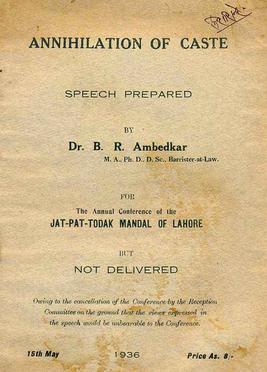Navin Sambrani
While the caste elite, being twice born enjoy the exponentially `squared ‘ status, the Keralite caste elite, savouring their status owing to erstwhile informal marital alliances with the twice born, are its logarithmic inverse (square rooted, to the power of two) counterparts. Life thus shrinks into itself, in all its tropical pestilence. Shashi Tharoor is the prime manifestation in present day India of this tendency. Elites in Maharashtra, Tamil Nadu and Kerala who exist outside the Brahminical ambit are caught in a double bind. They are nostalgic for that subservience, but want to enjoy a new found sovereignty, which can potentially pave the way to caste supremacy.
The apparent backwardness of Shudra castes such as Nairs is owing to reasons other than class. Caste is not a function of economic status, but of social backwardness as any child in India knows. Therefore, the recent move by the Kerala government to allocate 10% reservation to economically weaker sections among the `munnakka’ (`caste’ elite) population has led to a predictable political backlash. Political exigencies notwithstanding, the move is sure to backfire, without achieving its purported aim. The backwardness of the square-root castes such as the Nairs is owing to their severing the links with the twice born Brahmins. This kinship factor has been swept aside and instead an economic logic is sought to be foisted upon the subaltern sections of the populace, in a wanton move of populism aided by misguided academic economists such as Prabhat Patnaik. Caste has an anthropological life outside of the economic base. The superstructure of caste imbues the ecosystem of life in India, in a way economists cannot possibly fathom. The nightmare of caste history with all its atrocities cannot be simply wished away by indulging in petty electoral gimmicks.
From caste sovereignty to caste supremacy
The arrival of the Aryans led to an erosion of the Dravidian state power. The elites of Kerala such as Nairs have Brahminical links owing to the matrilineal system. This has been legally abolished due to the activism of certain stalwarts. (O.Chandu Menon, a legal luminary as well as author of `Indulekha’ the first major Malayalam novel, actively campaigned for the abolition of the matrilineal kinship mode, which was considered detrimental to the interests of men in a rapidly modernizing milieu). Though the matrilineal Muslims retained their matrilineal allegiances through deft manipulation of their Shariah law, tweaking it to suit the new realities, the Nairs modernized rather too rapidly, casting out the system altogether. It is in this context of being cast out of the Brahminical edifice that the `decline of Nair dominance in Kerala’ has to be seen, as Robin Jeffrey succinctly puts it. The nostalgia for the matrilineal past is prevalent in Malayalam cinema with its architectural primordialism of the `house around the courtyard’. The practise of naming kids after northern castes, out of context is prevalent. Names such as Dixit, Banerjee, Bharadwaj and Gavaskar are fairly common in Kerala, often precipitated with their real estrangement value during elections to local bodies and the like.
Kanchah Ilaiah Shepherd writes: “Traditionally, the basic work of the Nairs, as of many Shudra castes, was agriculture, but the caste system that allotted them this work also denied them land rights. Over the centuries, the Nairs moved away from their typically Shudra occupation, and under the influence of Brahminism entered into a unique relationship with the dominant Nambudiri Brahmins. Well into the nineteenth century, Nair women lived in sambhandham with the Nambudri Brahmins’ younger sons. This was a form of sexual slavery, with the women denied marital rights and the men freed from obligation towards any children of the union, and it had full spiritual and religious sanction under the caste order. Like other oppressed castes, under Brahminical hegemony the Nairs were also denied the right to education. That restriction was loosened with the arrival of British power, but with that control over education in Kerala fell largely into the hands of Syrian Christians. In 1914, the Nair leader Mannatthu Padmanabha Pillai established the Nair Service Society, with a view to gaining educational autonomy. The organisation runs a number of institutions of learning to this day, and has been crucial to making the Nairs the most educated Shudra community in India today”.

Affirmative action cannot help the logarithmic castes reclaim their erstwhile caste `pride’ since it is entangled in hierarchical systems of kinship now legally outlawed, such as the matrilineal alliance system. The kinship forms such as temporary alliances cannot be restored through affirmative action. Instead of the exponential movement from caste sovereignty to caste supremacy, that was expected post-independence, the non-twice born caste elites have witnessed a steady erosion and logarithmic shrinking of their caste `pride’ and `status’. Dravidian on Dravidian violence is on the rise and this can soon lead to a tinderbox dynamic which is hardly in anyone’s interest.
Becoming Shudra: Double Bind of the Dravidian Caste Elite
No amount of affirmative action on an economic basis can help the logarithmic castes to reclaim their past status of sovereignty. This is because their erstwhile sovereignty was owing to alliances, though informal, with the exponential castes such as the Namboodiris. This cannot be restored owing to a fait accompli modernity that has already eliminated the female-dominated matrilineal kinship system. This emergent patriarchy has produced leaders such as VK. Krishna Menon and Shashi Tharoor. Backwardness in Indian society is a function of caste and not of economic status. The obvious decline of the logarithmic castes is owing to their sliding down the caste ladder. The process of ‘becoming Shudra’ is sought to be arrested with cosmetic measures such as EWS reservations. This can seriously backfire and result in the relatively progressive social ethos of Kerala ending up in the heartland way.
Actively embracing their quaternary status within the caste hierarchy is anathema to the logarithmic castes such as the Marathas, Vellalas and the Nairs. While seeking to restore their primordial caste pride of martial legends, the legitimate rights of the subaltern communities are being systematically usurped. Martial legends and mythical valour engender serious violence and strife in India. Bigots can hardly be won over through bribes. Also alarming is the amount of Dravidian on Dravidian violence that is going on at present in a southern state like Tamil Nadu.
~~~
Navin Sambrani is a writer based in Chennai.










